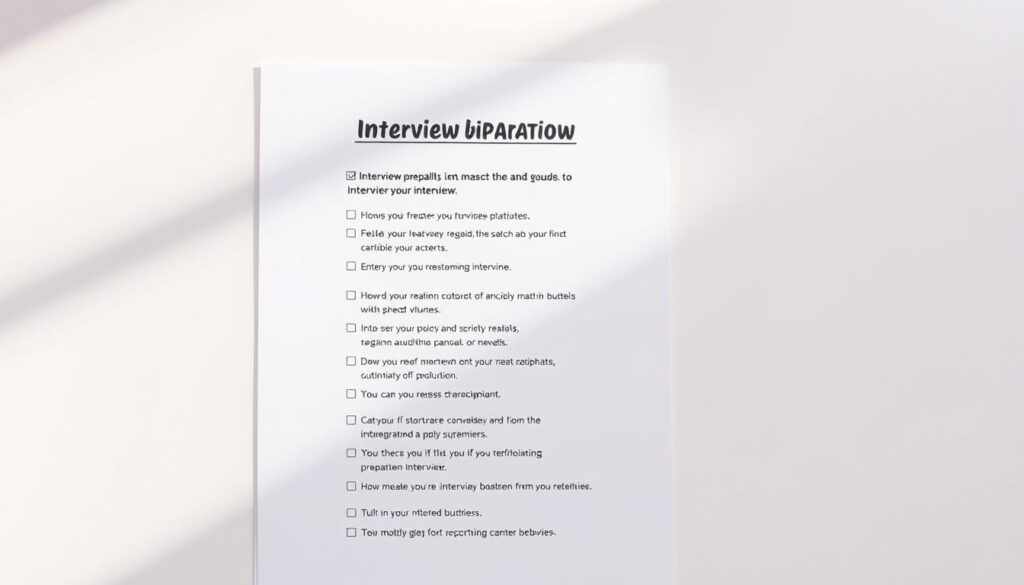What if the most critical step in your career advancement isn’t just practicing answers, but knowing exactly what modern employers prioritize? In today’s fast-evolving job market, generic preparation methods often leave candidates unprepared for specialized roles requiring expertise in enterprise learning platforms.
This guide equips you with meticulously curated responses aligned with 2025 hiring trends. You’ll gain precise strategies to demonstrate mastery of organizational development tools, troubleshoot technical scenarios, and articulate solutions that resonate with decision-makers. Every answer is structured to highlight your problem-solving agility while addressing real-world challenges faced in system administration and user support roles.
Enhance your preparation with targeted resume optimizations and RoboApply’s Auto Apply feature – a game-changer that submits tailored applications to thousands of relevant positions instantly. This combination ensures you enter every discussion fully prepared, with documentation that reinforces your technical credibility.
Key Takeaways
- Access 2025-specific response frameworks for enterprise software roles
- Learn to align answers with behavioral assessment criteria
- Streamline application processes with automated job matching
- Master technical troubleshooting scenarios employers prioritize
- Develop concise narratives demonstrating system optimization skills
Introduction to SumTotal Interview Questions
Specialized positions in enterprise learning require candidates to showcase measurable problem-solving skills through structured examples. Hiring managers prioritize three assessment areas:
- Behavioral evaluations testing conflict resolution in system rollouts
- Technical drills analyzing learning platform data flows
- Scenario-based questions about optimizing employee training ROI
You’ll need to articulate how you’ve improved training completion rates or reduced system downtime. Use specific metrics like “increased user adoption by 40% through simplified interface redesign” to demonstrate business impact.
RoboApply’s interview coach helps refine these narratives with AI-powered feedback on clarity and relevance. The tool simulates real-world scenarios you might face when discussing talent acquisition modules or performance analytics dashboards.
Prepare for data-driven scenarios by reviewing common integration challenges between HR systems. Employers want proof you can troubleshoot authentication errors or streamline reporting workflows.
Pair your technical knowledge with strategic communication – explain complex concepts using non-technical analogies. This dual focus shows you’re ready to collaborate with both IT teams and department leaders.
The Role of Competency-Based Interviewing
Modern hiring strategies demand more than rehearsed answers—they require proof of how you’ve solved real challenges. Competency-based assessments focus on your ability to apply skills in workplace scenarios, making them critical for roles involving system optimization or program development.

Key Competencies for Success
Employers prioritize five core traits when evaluating candidates:
- Customer orientation: Aligning solutions with user needs
- Adaptive learning: Quickly mastering new technical systems
- Collaborative problem-solving: Bridging gaps between IT and operational teams
“A well-designed competency framework doesn’t just measure skills—it predicts how you’ll drive growth during complex system upgrades.”
Practical Preparation Tips
Map experiences to competencies: Identify 3-5 situations where you improved processes or program outcomes. Use metrics like “reduced training costs by 25% through automated course design.”
Master the STAR format: Structure responses with clear Situation-Task-Action-Result sequences. For leadership scenarios, review decision-making frameworks to showcase strategic thinking.
Simulate technical discussions: Practice explaining learning management systems using non-technical analogies. Focus on how your actions supported organizational development goals.
How RoboApply Enhances Your Interview Prep
Modern job searches demand tools that streamline every step while maintaining precision. RoboApply transforms your preparation into a strategic process, combining AI-powered analysis with industry-specific insights to position you ahead of competitors.
AI Resume and Cover Letter Builder
RoboApply’s builder crafts tailored application materials in three clicks. The tool analyzes job descriptions to emphasize your program development experience and technical problem-solving skills. You’ll receive ATS-friendly formats that highlight quantifiable achievements, like optimizing user adoption rates or reducing system downtime.
ATS Optimizer and Grammar Checker
The platform’s optimizer scans your resume for keyword alignment, ensuring it passes through applicant tracking systems. Pair this with the grammar checker to eliminate errors and maintain a professional tone. One user reported: “The step-by-step guidance helped me refine my project management narratives while keeping technical jargon accessible.”
Beyond documents, RoboApply’s job tracker organizes your applications and sends follow-up reminders. The interview coach feature simulates real-world scenarios, providing feedback on delivery and content structure. This end-to-end support ensures you’re prepared to discuss complex systems with confidence.
Deep Dive: SumTotal Interview Questions Checklist
Effective preparation for specialized roles hinges on anticipating the exact scenarios employers prioritize. This checklist helps you structure responses that demonstrate technical expertise and strategic thinking, aligning with current evaluation frameworks.

Essential Questions to Expect
Expect inquiries about designing scalable learning programs. One example: “Describe how you’d create a global onboarding plan using enterprise platforms.” Focus on customization for regional compliance needs and multilingual support.
Technical scenarios often involve system integration challenges. Prepare to explain troubleshooting steps for data sync errors between platforms. Highlight your method for isolating issues—API configurations or user permissions—before escalating problems.
Behavioral questions test adaptability. You might face: “Share how you redesigned an underperforming training initiative.” Quantify outcomes like 30% engagement boosts through gamification or personalized learning paths.
Effective Response Strategies
Use the STAR method to structure answers, but add a business impact summary. For ROI questions, detail metrics like reduced turnover costs from leadership development programs.
Practice translating technical processes into stakeholder benefits. When discussing system migrations, emphasize minimized downtime through phased rollouts and user training workshops.
For compliance scenarios, provide a clear example: “Implemented automated audit trails in regulated industries, cutting reporting time by 50%.” This shows both platform mastery and risk management awareness.
Behavioral Interview Questions: Evaluating Soft Skills
Your ability to showcase soft skills often determines whether you advance in high-stakes hiring processes. Employers use behavioral questions to assess how you’ve handled real workplace challenges – not just what you know, but how you apply it.
Storytelling Through Real Examples
When asked, “Tell me about a time you resolved a customer complaint,” focus on specifics. One candidate shared: “A user struggled with our learning platform’s interface during a rollout. I scheduled personalized training sessions and implemented their feedback into simplified navigation menus – reducing support tickets by 30%.”
For continuous learning scenarios, structure responses around growth. Example: “I once misconfigured user permissions, causing access errors. After fixing it, I created a checklist that cut similar mistakes by 75%.” Highlight lessons learned, not just the error.
Adaptability questions require showing flexibility. Describe how you adjusted timelines when project requirements shifted: “We reallocated resources to meet urgent compliance updates, delivering 80% of original scope within deadlines.”
Collaboration examples should demonstrate cross-functional work. Use phrases like: “Partnered with HR and IT to redesign onboarding workflows,” mirroring proven collaboration strategies. Quantify outcomes – faster implementation cycles or higher team satisfaction scores.
SumTotal interview questions
Navigating technical interviews requires precise preparation for role-specific scenarios. Below are two critical areas to master, with actionable strategies to showcase your expertise.
Core Module Differentiation
Expect foundational questions about platform architecture. For example: “Explain how Learn, Perform, and Succession Management integrate.” Structure your answer like this:“Learn focuses on skill development through courses, while Perform tracks KPIs and goals. Succession Management identifies leadership candidates. In a recent upgrade, I aligned these modules by syncing completion data from Learn to Perform dashboards – improving promotion readiness tracking by 25%.”
Program Leadership Scenarios
Demonstrate cross-functional coordination skills. When asked: “How would you lead a global training rollout?” Highlight phased execution:“I partnered with regional managers to localize content, reducing translation errors by 40%. Weekly syncs with IT ensured LMS compatibility, cutting launch delays by half. Post-launch surveys showed 92% user satisfaction.”
Boost hands-on experience through software engineering internships focusing on enterprise systems. This builds practical examples employers value.
Pro Tip: Use RoboApply’s resume scanner to highlight program management metrics like cost savings or efficiency gains. Quantifiable achievements make your answers memorable.
FAQ
How does competency-based interviewing work at companies using SumTotal?
Competency-based interviews focus on specific skills like problem-solving, leadership, or technical expertise. You’ll need to share detailed examples from past roles that demonstrate how you’ve applied these skills. Use the STAR method (Situation, Task, Action, Result) to structure responses clearly.
Can RoboApply’s ATS optimizer improve my resume’s compatibility?
Yes. The tool scans your resume for keywords, formatting issues, and missing sections that SumTotal-powered applicant systems prioritize. It ensures your application aligns with job descriptions and highlights achievements using quantifiable metrics like “improved efficiency by 25%.”
What’s the best way to structure responses to behavioral questions?
Start with a brief context (e.g., “In my last role, I managed a team of 10 during a system migration”). Explain your actions (“I created a phased rollout plan”) and conclude with measurable outcomes (“Downtime dropped by 40% within three weeks”). Practice with real scenarios to avoid generic answers.
How important are technical questions for roles involving SumTotal platforms?
Technical proficiency is often tested through scenario-based tasks, like troubleshooting a system error or configuring a learning module. Review job descriptions for required skills (e.g., LMS administration, reporting tools) and practice with mock exercises to build confidence.
Should I mention certifications in SumTotal platforms during the interview?
Absolutely. Certifications validate your expertise and show proactive learning. Pair them with examples of how you’ve applied that knowledge, such as “After completing the SumTotal Administrator course, I streamlined our onboarding process, reducing training time by 30%.”
How soon after applying should I expect to hear back?
Response times vary, but most organizations using automated systems like SumTotal take 1–3 weeks to schedule interviews. Tools like RoboApply’s tracker can monitor application status and send alerts when hiring managers review your materials.


















